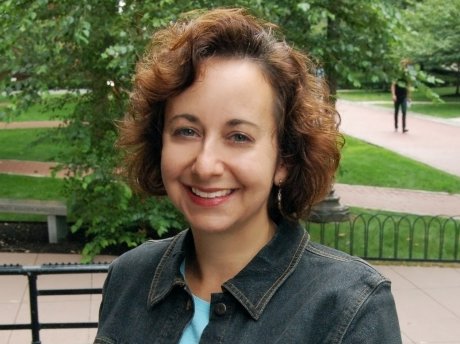
Pratt Center Project
Completed in 2012 Building Resilient Communities
Building Resilient CommunitiesGreen Community Plans
Pratt Center works with local groups to develop green community plans – comprehensive strategies toward sustainable, resilient and prosperous neighborhoods.
New York City’s low- and moderate-income communities are disparately vulnerable to climate change and a range of environmental risks, such as waste transfer stations and dirty power plants. Mutually-reinforcing and interconnected, such disparities are the collective product of top-down public policies and market-driven planning largely implemented without the input and guidance of those forced to unevenly shoulder their burdens.
To address this, community groups in dozens of low- and moderate-income neighborhoods throughout the city have organized to plan for their futures and actively participate in the development efforts that affect their constituents’ lives. For years, Pratt Center has worked in partnership with these groups to create green community plans – local comprehensive strategies toward sustainable, resilient and prosperous neighborhoods. We help these groups to engage a broad sector of their community in the plan's development, to collect, synthesize and interpret data, to provide information and recommendations for the community to consider, to draft written plans and help design steps and presentations for implementation. Here are some of the recent green community plans we helped produce:
Brooklyn Greens – Brooklyn Greens was a comprehensive three-year initiative to guide three distinct Brooklyn community groups - Bedford Stuyvesant Restoration Corporation, Cypress Hills Local Development Corporation, and El Puente de Williamsburg – toward integrated sustainability strategies involving brownfield remediation, weatherization and retrofits, green open space and stewardship, access to healthy and affordable food, green job training, and community education and organizing. Launched by the Brooklyn Community Foundation in 2010, Pratt Center coordinated the initiative, convening the three organizations and a network of community partners, providing technical assistance and strategic support, and tracking their progress, challenges and key results. Among many other things, the Brooklyn Greens initiative achieved the following results:
- Completed over 220 residential retrofits
- Planted over 1,000 trees with several stewardship trainings
- Launched a community energy efficiency company with 6 local jobs created
- Constructed close to 200 green affordable housing units
- Completed a Farmers’ market feasibility study
- Completed Brownfield Opportunity Area plans with over 100 sites
- Organized youth EJ and community garden workshops with over 200 participants
- Launched a youth air-monitoring initiative
- Co-convened two annual community food summits
- Developed new partnerships with Business Improvement Districts, Fresh Bodegas, Green Thumb, New York Restoration project, and several energy efficiency contractors
- Greened a child care center and community facilities
- Curated an environmental justice art exhibit
- Leveraged over $1.6 million from other sources for community development projects
Sustainability Through the Arts – Pratt Center launched Sustainability Through the Arts in partnership with Arts East NY, Bedford Stuyvesant Restoration Corporation, Cypress Hills Local Development Corporation, and Pratt Institute’s Initiative for Arts, Community and Social Change (IACSC). The project aimed to magnify the role of arts and culture in community-driven sustainability initiatives, strengthen the capacity of artists to promote a civic dialogue about community sustainability, and foster synergies between the arts and the community development movement. Through concerts, exhibits, theater programs, “energy” block parties and art events at East New York Farms’ farmers market, we mobilized over 6,500 people to take part in sustainability efforts in two communities over an 18 month period. As an example, we collaboratively juried and installed “Amplify Action: Sustainability Through the Arts” – a multimedia exhibition in Bedford Stuyvesant demonstrating innovative approaches to re-purposing everyday waste, highlighting environmental injustices, and critically examining the relationship between the built environment, environmental alienation and communities’ sustainability goals. We also incorporated energy efficiency and healthy eating resources and sustainability messaging into Arts East New York’s Summer Saturdaze, a series of cultural events for East New York residents.
We found that the arts, cultural practices and media are effective tools for sparking the level of community dialogue and participation that we know we’ll need if our overarching sustainability goals are to be achieved. By nature, it’s difficult to mobilize community residents in planning and sustainability efforts – they’re busy raising their families, trying to make ends meet, and facing the challenges of living in under-resourced neighborhoods. By engaging a diverse group of community residents through the arts, we were able to engender greater participation at our collaborative community planning workshops and in our partners’ complementary community sustainability initiatives involving urban agriculture, tree planting and landscaping, residential energy efficiency, and brownfield remediation planning.
Cypress Hills Project Verde – Cypress Hills Local Development Corporation’s (CHLDC) Project Verde is a multi-year sustainability initiative in Cypress Hills and East New York. As part of this project, Pratt Center provided extensive planning, research and technical assistance to CHLDC in the development of a Green Master Plan – a comprehensive local strategy to develop and integrate affordable housing, community facilities, economic development, food, health & wellness, open space, street-scape, transportation, waste & sanitation, and youth development resources. We first engaged in extensive research to identify the biggest challenges facing the residents of Cypress Hills/East New York. Designed by Pratt Center and conducted by CHLDC, a Community Satisfaction Survey was distributed to and completed by more than 600 Cypress Hills/ENY residents to assess local concerns about living, working, eating and learning. Click here to see an overview of the survey responses. In collaboration with CHLDC, we then utilized the findings from this survey to design and organize their Verde Summit, an inclusive, bi-lingual two-day community planning event in which community members came together to re-envision the way their neighborhoods look, feel and work. Pratt Center designed half of the Summit’s workshop sessions, produced training guides for all session facilitators, bi-lingual summations of our research and other event materials, and provided documentary support. Click here for more information on the Summit and the community’s sustainability vision and strategy.
The Green Agenda for Jackson Heights – The Green Agenda for Jackson Heights was a collaboration between Queens Community House, Friends of Travers Park and Pratt Center, bringing together hundreds of residents of Jackson Heights to plan an environmental blueprint for the neighborhood. Since most people who live in the neighborhood take public transportation, live in compact spaces, shop locally and live frugally, Jackson Heights is already a "green" community. But it also faces a distinct set of environmental challenges. The City Council district that includes Jackson Heights has just 1 acre of park space for every thousand children. Traffic to and from nearby La Guardia airport pollutes the air and clogs the streets. And Jackson Heights has a larger share of tenants living in severely overcrowded housing than any other neighborhood in New York City.
Using a special workbook designed by Pratt for the project and printed in four different languages, over 400 residents participated in visioning sessions to assess the stat of the neighborhood environment and identify opportunities to improve it. Community participants identified priority areas for greening Jackson Heights, including expanding open space, reducing waste and many other steps toward environmental and economic sustainability. These actionable ideas were codified in a final publication, The Green Agenda for Jackson Heights.

